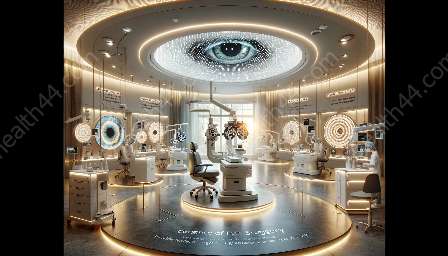As an essential part of vision care, understanding corneal diseases and treatment options is crucial for maintaining optimal eye health. The cornea, the transparent outermost layer of the eye, plays a critical role in focusing vision. However, it is susceptible to various conditions that can affect vision and overall eye health. In this comprehensive guide, we'll delve into the topic of corneal diseases and treatments, covering essential information and practical insights to help you navigate this critical aspect of eye care.
Understanding the Cornea
The cornea is the clear, dome-shaped surface that covers the front of the eye, acting as a protective barrier against dust, germs, and other harmful particles. It also plays a pivotal role in focusing light into the eye, contributing to clear vision. The cornea is composed of several layers, each with a specific function, and its health is vital for maintaining optimal eyesight and overall visual comfort.
When the cornea is affected by diseases or other conditions, it can lead to a variety of symptoms, including blurred vision, eye pain, and sensitivity to light. Proper diagnosis and timely treatment are essential for managing corneal diseases and preventing potential vision impairment.
Common Corneal Diseases and Conditions
There are several corneal diseases and conditions that can impact eye health. Some of the most prevalent include:
- Keratoconus: This progressive condition causes the cornea to thin and bulge into a cone-like shape, leading to distorted and blurred vision.
- Corneal Dystrophies: These are a group of genetic, often progressive, eye disorders that affect the cornea's clarity, leading to a range of visual impairments.
- Corneal Abrasions: These are superficial scratches on the cornea's surface, often caused by foreign objects or trauma, resulting in pain and discomfort.
- Corneal Ulcers: These are open sores on the cornea, usually caused by infections or injuries, and can lead to severe vision loss if not promptly treated.
Diagnosis and Treatment
Diagnosing corneal diseases involves a comprehensive eye examination, including visual acuity tests, corneal mapping, and analysis using specialized instruments. The treatment approach for corneal diseases varies depending on the specific condition and its severity. Some common treatment options include:
- Corneal Cross-Linking: A minimally invasive procedure used to strengthen the cornea and slow the progression of keratoconus.
- Corneal Transplant (Keratoplasty): In cases of advanced corneal damage or disease, a surgical transplant of the cornea from a donor may be necessary to restore vision.
- Topical Medications: Antibacterial or antifungal eye drops may be prescribed to treat corneal ulcers or infections.
- Contact Lenses: Specially designed contact lenses, such as scleral lenses, can provide improved vision and comfort for individuals with corneal irregularities.
Vision Care and Overall Eye Health
Beyond the specific treatment of corneal diseases, maintaining overall eye health is essential for preserving vision and preventing future complications. Regular eye examinations, proper eye hygiene, and healthy lifestyle choices all play a crucial role in safeguarding the health of the cornea and the eyes as a whole.
Additionally, seeking timely medical attention for any symptoms of corneal diseases, such as persistent eye discomfort, vision changes, or redness, is vital for early detection and effective management. By staying informed about corneal diseases and understanding the available treatment options, individuals can take proactive steps to protect their vision and ensure long-term eye health.

































